Other materials
-
Jesuit plays. Códice de Villagarcía. Auto de "La oveja perdida" and "Danza para el Santísimo Sacramento", ed. Jesús Menéndez Peláez, Pamplona, GRISO Digital Publications, 2012.
-
Arellano, I., Repertorio de motivos de los autos sacramentales de Calderón., Pamplona, Publishing Services of the University of Navarra, 2011 (GRISO Digital Publications).
-
Sáez, A. J., Hacia una bibliography sobre autoridad y poder en el siglo de Oro (Towards a on authority and power in the Golden Age)Pamplona, Pamplona, GRISO Digital Publications, 2011.
-
Menéndez Peláez, Jesús (coord.), Juan Bonifacio, Codex of Villagarcía or Book of Tragedies. Tragedy of Naaman, Pamplona, GRISO Digital Publications, 2011.
-
Entremeses del teatro jesuíticoJesús Menéndez Peláez, Pamplona, GRISO Digital Publications, 2011.
-
Saint Francis Xavier. The Sun in the East. Jesuit Comedy by Fr. Diego Callejaed. I. Arellano, 2011. For the edition accompanied by introduction, notes and illustrations we refer to the version printed in Madrid, Iberoamericana, 2006.
-
Digital edition of the Memoirs of the International Baroque Meetings (Bolivia): see below.
I
Andean Baroque
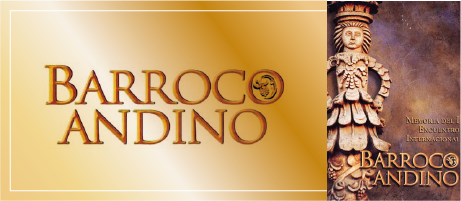
Barroco andino. report del I meeting internacional, Pamplona, Fundación Visión Cultural/Publishing Services de la Universidad de Navarra, 2011 (digital edition from La Paz, Viceministerio de Cultura de Bolivia/Union Latina, 2003).
ISBN: 84-8081-077-7.
With the aim of reflecting on the diversity of themes covered by the Baroque period, the Vice-Ministry of Culture and the Unión Latina, in the framework of their objectives, organised the I International meeting on the Andean Baroque, which took place from 9 to 13 December 2002 in the city of Santa Cruz de la Sierra, with the participation of leading specialists from Bolivia, Peru, Ecuador, Colombia, Venezuela, Argentina, Chile, Spain and Mexico, who for five days focused on themes of Baroque theory, architecture, the arts, music, festivals and literature, and managed to reflect and discuss the theory of the Baroque, architecture, the arts, music, festivals and literature, Peru, Ecuador, Colombia, Venezuela, Argentina, Chile, Spain and Mexico, who for five days focused on Baroque theory, architecture, the arts, music, festivals and literature, reflecting on and discussing this important subject, which forms part of the history of art in the Andean region and is a contribution to the history of universal art.
Our intention is that this publication, which brings together all the works of research presented at meeting, will be a further contribution to the dissemination of the Baroque in the Andean countries.
Index
II
Baroque and sources of cultural diversity
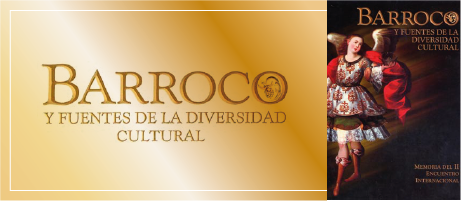
report from II meeting International on Baroque. Baroque and sources of cultural diversity, Pamplona, Fundación Visión Cultural/Publishing Services of the University of Navarra, 2011 (digital edition from La Paz, Viceministerio de Cultura de Bolivia/Union Latina, 2004).
ISBN: 84-8081-078-5.
This second version of the International meeting on the Baroque, which took place in the city of Sucre from 29 October to 1 November 2003, under the organisation of the Vice-Ministry of Culture, the Latin Union, UNESCO and the file and Library Services Nacionales de Bolivia, has allowed us to bring together in dialogue and reflection on the Baroque and the sources of cultural diversity, distinguished personalities from the fields of history, architecture, art, music and literature from different countries.
Both the academic aspect as well as the integration between lecturers and
The academic aspect, as well as the integration between lecturers and attendees, have given rise to the importance of this activity, which can be continued with a next version. We hope that this report containing the dissertations presented will be a further contribution to the history of art, especially in American countries.
Index
III
Mannerism and transition to the Baroque
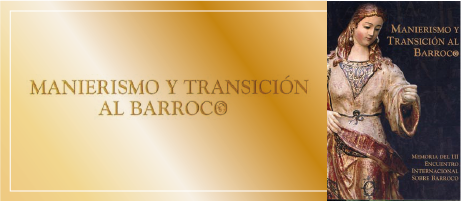
report from the III meeting Internacional sobre Barroco. Mannerism and transition to the Baroque, Pamplona, Fundación Visión Cultural/Publishing Services of the University of Navarra, 2011 (digital edition from La Paz, Viceministerio de Cultura de Bolivia/Union Latina, 2005).
ISBN: 84-8081-079-3.
The third version of the Internationalmeeting on the Baroque, with the title topic Mannerism and transition to the Baroque, was held from 30 March to 2 April 2005 in the city of La Paz. It was organised by the Unión Latina, which was joined by the Centro de programs of study Indianos of the University of Navarra. A positive response has been the interest of specialists from different countries in America and Europe who came to quotation on this occasion, and even more, the expectation among professionals and students also from different countries, who attended, converting the meeting into a space for reflection and cultural integration.
It is necessary to make this consideration, as it is an unmistakable sign that activities such as the meeting International on the Baroque contribute to the dissemination of the programs of study specialised in American and European art and culture of the 16th, 17th and 18th centuries.
We hope that this publication, which brings together all the works of research presented at meeting, will be a further contribution to the dissemination of this subject that enriches the history of art.
Index
IV
The party
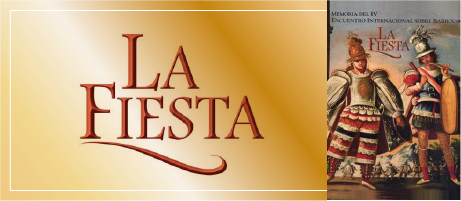
report from the IV meeting Internacional sobre Barroco. La fiesta, Pamplona, Fundación Visión Cultural/Publishing Services of the University of Navarra, 2011 (digital edition from La Paz, Union Latina, 2007).
ISBN: 84-8081-080-7.
Between 11 and 14 April 2007, the IV meeting International Baroque Conference was held in the city of La Paz, with the topic La Fiesta, organised by the Unión Latina, with the support of the Griso-University of Navarra, the Royal Embassy of the Netherlands, the Municipal Government of La Paz, public and private Bolivian institutions and diplomatic representations.
Once again, a space has been created to share the most recent research work, to motivate common reflections and dialogues on "La Fiesta" and to achieve cultural integration. The topic of La Fiesta is an essential part of the intangible heritage, considered as a constant social internship , as a point of meeting where transformation, creations and recreations are manifested in its different fields that contribute to create an illusion of reality and to integrate societies.
The present report contains the papers of the experts invited to this fourth version of meeting, from Argentina, Bolivia, Brazil, Chile, Spain, France, Holland, Mexico, Nicaragua, Peru, Portugal and Venezuela, which covered topics related to anthropology, history, arts, architecture, literature and music from the 16th to the 18th centuries and their subsequent repercussions.
Index
V
Between heaven and hell

report of V meeting International on Baroque. Entre cielos e infiernos, Pamplona, Fundación Visión Cultural/Publishing Services of the University of Navarra, 2011 (digital edition from La Paz, Fundación Visión Cultural, 2010).
ISBN: 84-8081-081-5.
With the holding of the V International meeting on the Baroque, which took place in 2009 in the city of La Paz - Bolivia, we believe that we have once again contributed to consolidating an important space for reflection and analysis of different topics related to the Baroque from the 16th to the 18th centuries with projections up to the present day, especially in the form and content with which it was developed in different territories of America and Europe.
The fecundity of the concepts that gave rise to this cultural and artistic movement, as well as the variety, richness and expression of values that bequest has given us as an invaluable heritage that lives and renews itself, place the Baroque among the most loaded with meanings in making and creating.
The topic of this V meeting, Between Heavens and Hells gave leading European and Latin American experts from 15 countries the opportunity to share their latest research with the public. The dialectic relationship between life and death, angels and demons, sin and holiness, heaven and hell, were analysed from the perspective of history, anthropology, art, architecture, literature, music and theatre, with emphasis on the specific features of these expressions in America in particular.
Index
VI
Image of power
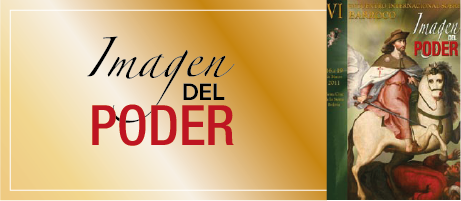
VI meeting Internacional del Barroco: "Imagen del poder", Santa Cruz de la Sierra (Bolivia), 16-19 March 2011.
framework On the occasion of the 450th Anniversary of the Foundation of Santa Cruz de la Sierra, the Fundación Visión Cultural, the Municipal Government of Santa Cruz de la Sierra, the Unión Latina, the Griso-Universidad de Navarra, the UPSA Universidad Privada de Santa Cruz with the support of the Consulate General of Chile, the Embassy of Brazil, the Embassy of Spain, and IRD and the Santa Cruz Cultural Centre, organised the VI International Baroque meeting from 19 March 2011, with topic "Image of power", which reflected on and contributed to the valorisation of the wealth of tangible and intangible cultural heritage of the 17th and 18th centuries, with projections into the 21st century.
Specialists from Argentina, Bolivia, Brazil, Colombia, Chile, Ecuador, Scotland, France, Spain, Italy, Mexico, Paraguay, Peru, Switzerland and Venezuela participated.
download programme (PDF)
